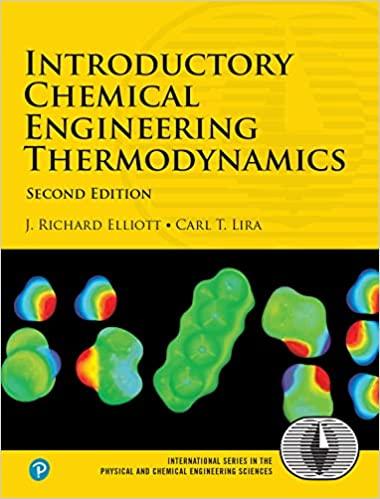Ethanol(1) + benzene(2) form azeotropic mixtures. Compare the specified model to the experimental data of Brown and
Question:
Ethanol(1) + benzene(2) form azeotropic mixtures. Compare the specified model to the experimental data of Brown and Smith cited in problem 10.2.
(a) Prepare a y-x and P-x-y diagram for the system at 45°C assuming the van Laar model and using the experimental pressure at xE = 0.415 to estimate A12 and A21.
(b) Prepare a y-x and P-x-y diagram for the system at 45°C with the predictions of the Scatchard-Hildebrand theory with k12 = 0.
(c) Prepare a y-x and P-x-y diagram for the system at 45°C assuming the SSCED model and using the standard guideline to estimate k12.
(d) Prepare a y-x and P-x-y diagram for the system at 45°C assuming the SSCED model and using the experimental pressure at xE = 0.415 to estimate k12.
Data from Problem 10.2
Solvent vessels must be purged before maintenance personnel enter in order to ensure that:
(1) Sufficient oxygen is available for breathing;
(2) Vapor concentrations are below the flash point;
(3) Vapor concentrations are below the Occupational Safety and Health Administration (OSHA) limits if breathing apparatus is not to be used.
Assuming that a 8 m3 fixed-roof solvent tank has just been drained of all liquid and that the vapor phase is initially saturated at 22°C, estimate the length of purge necessary with 2 m3/min of gas at 0.1 MPa and 22°C to reach the OSHA 8-hr exposure limit.
(a) Hexane 500 ppm
(b) 1-butanol 100 ppm
(c) Chloroform 50 ppm
(d) Ethanol 1000 ppm
(e) Toluene 200 ppm
Step by Step Answer:

Introductory Chemical Engineering Thermodynamics
ISBN: 9780136068549
2nd Edition
Authors: J. Elliott, Carl Lira





